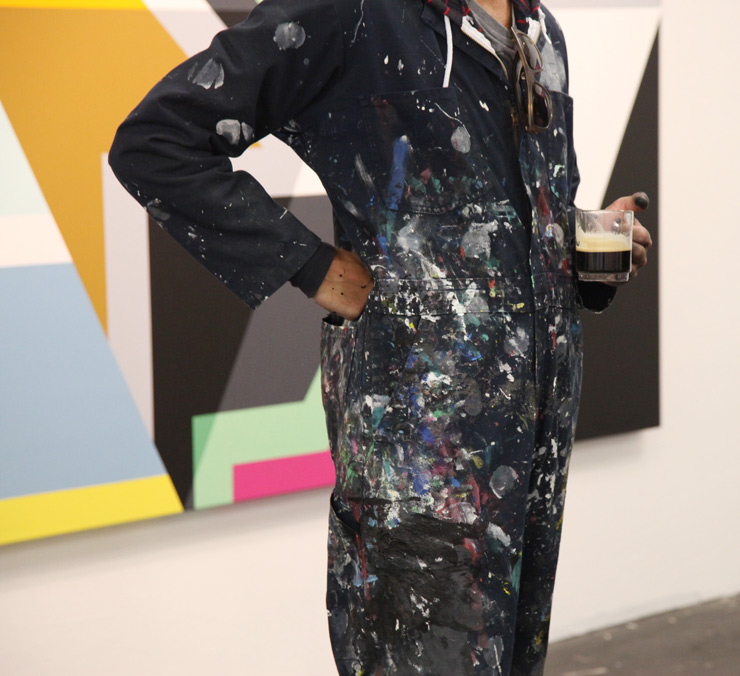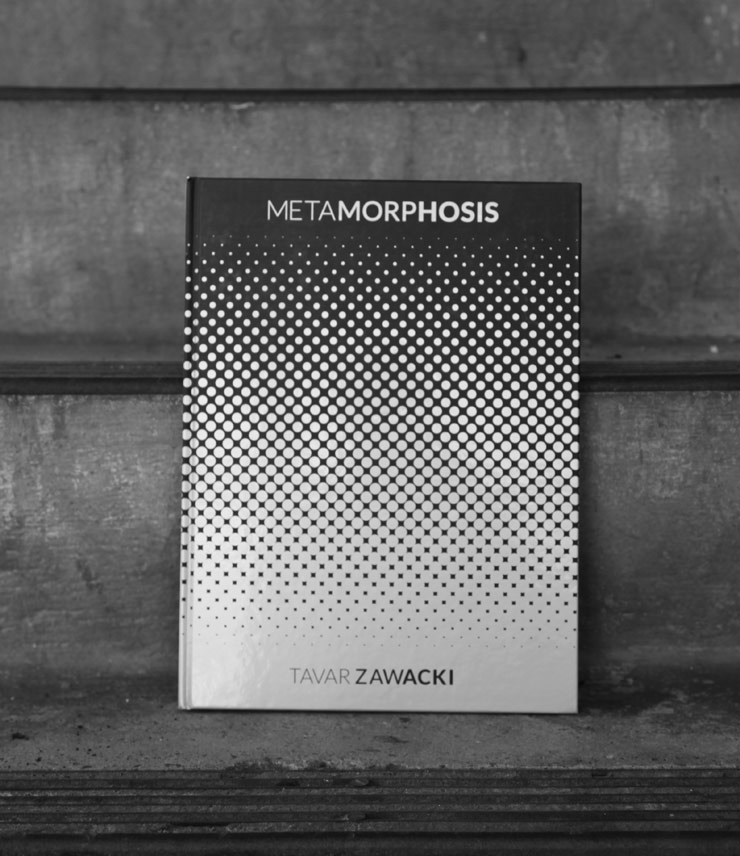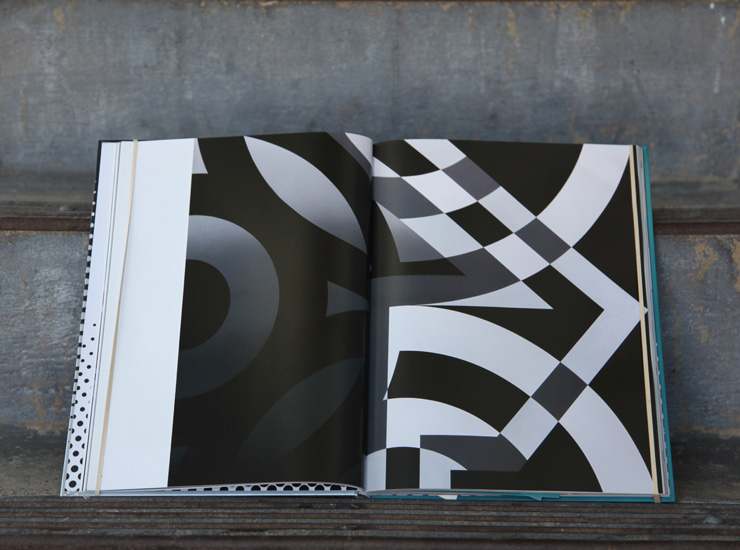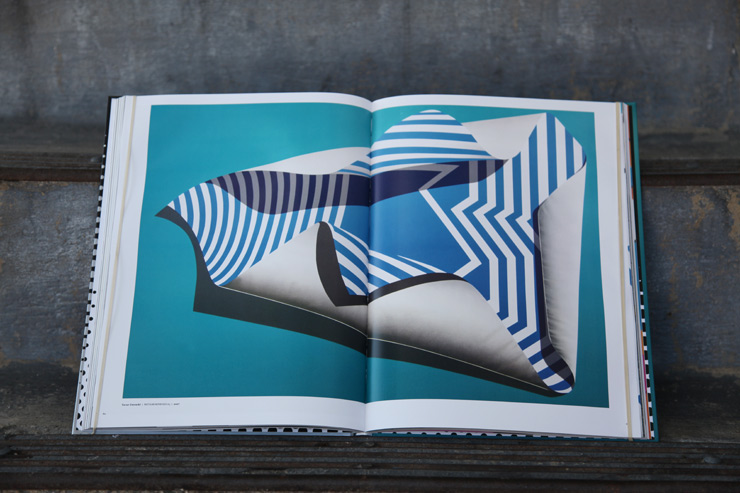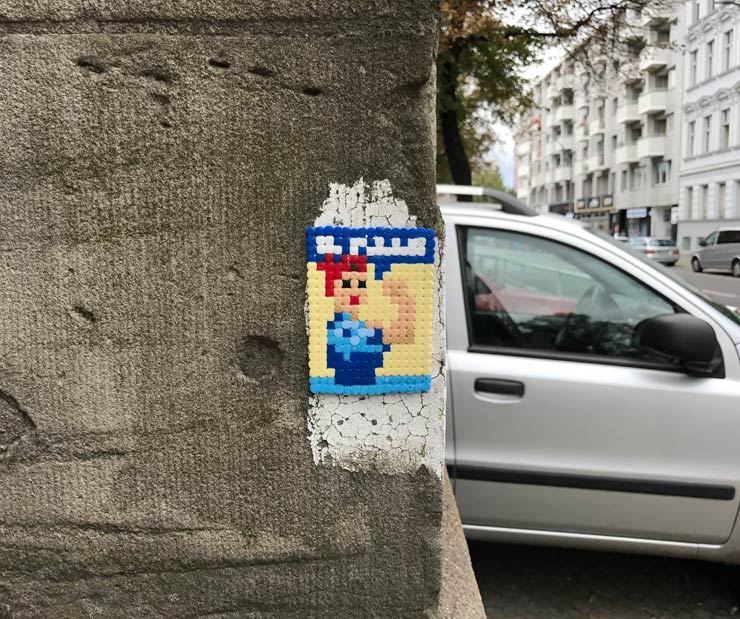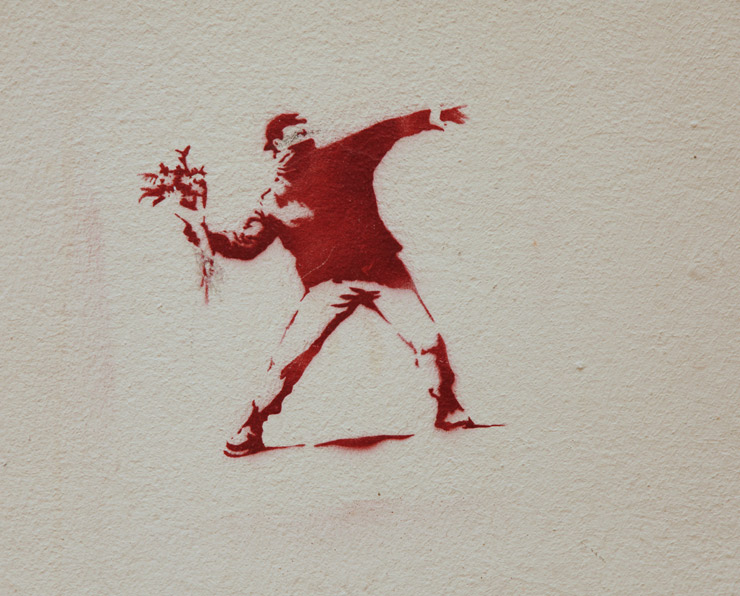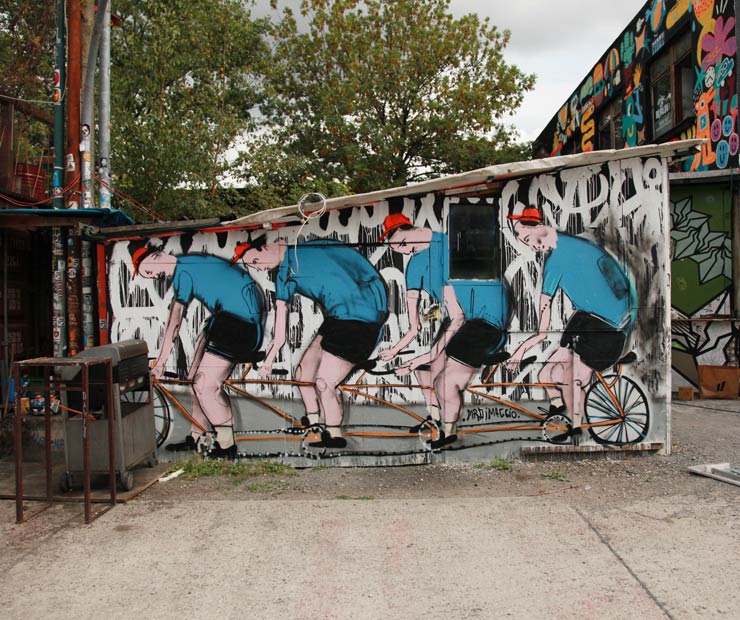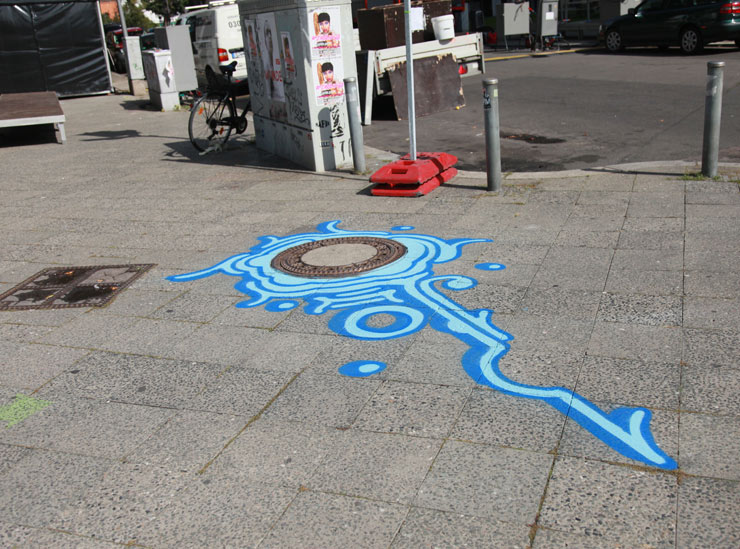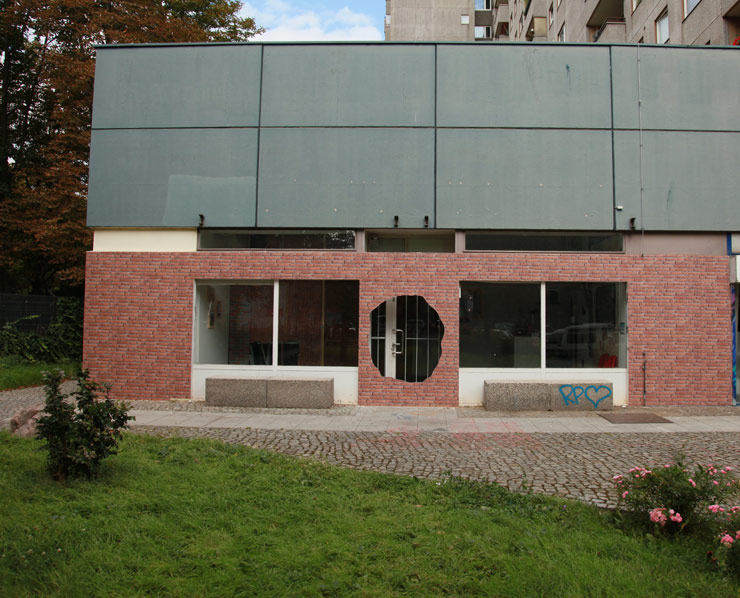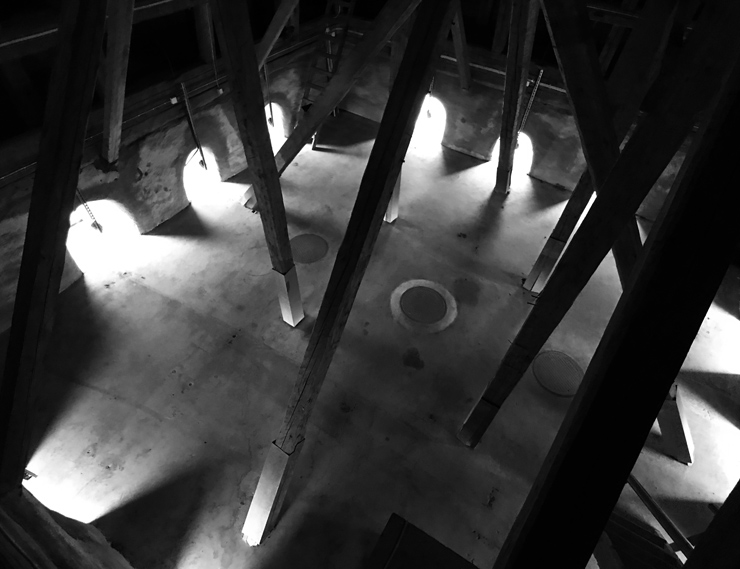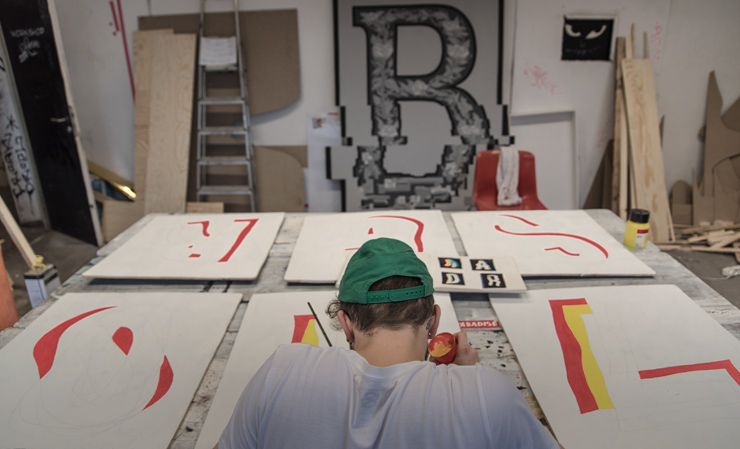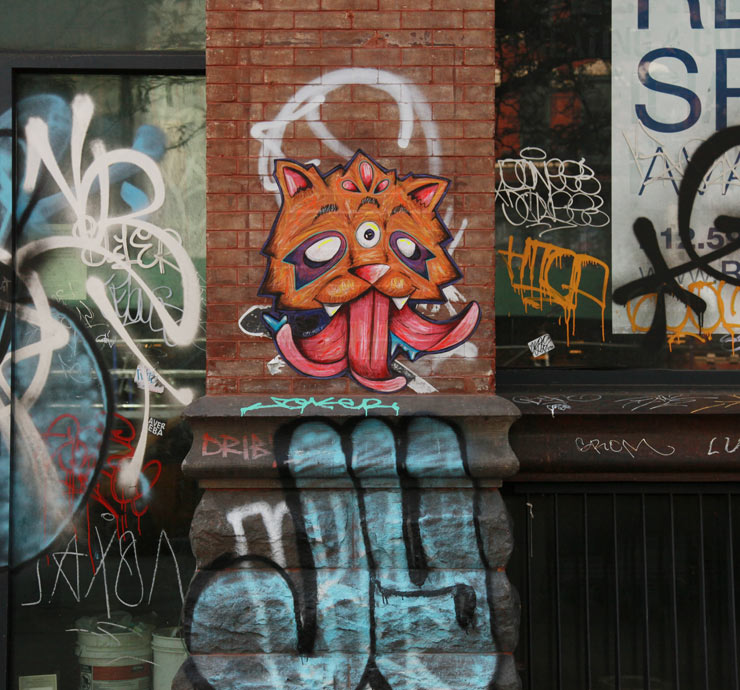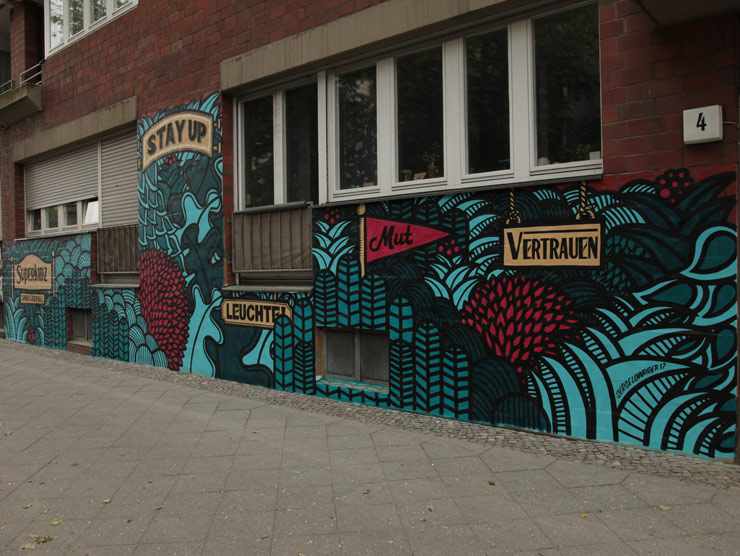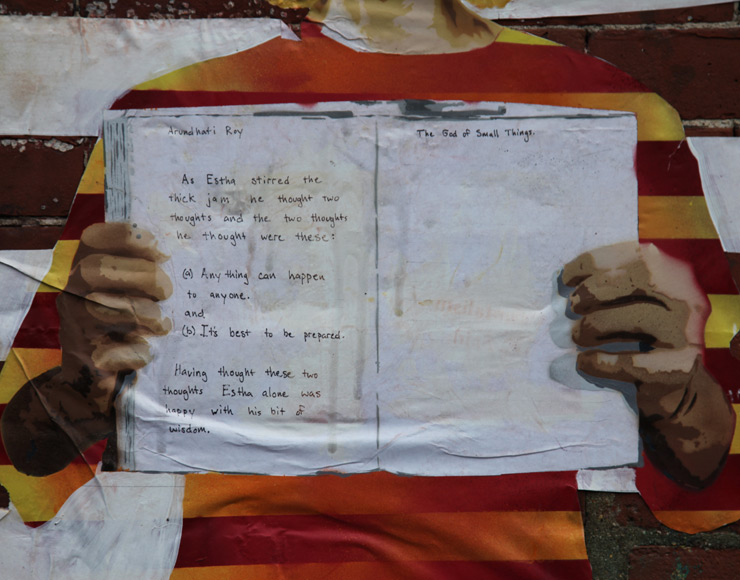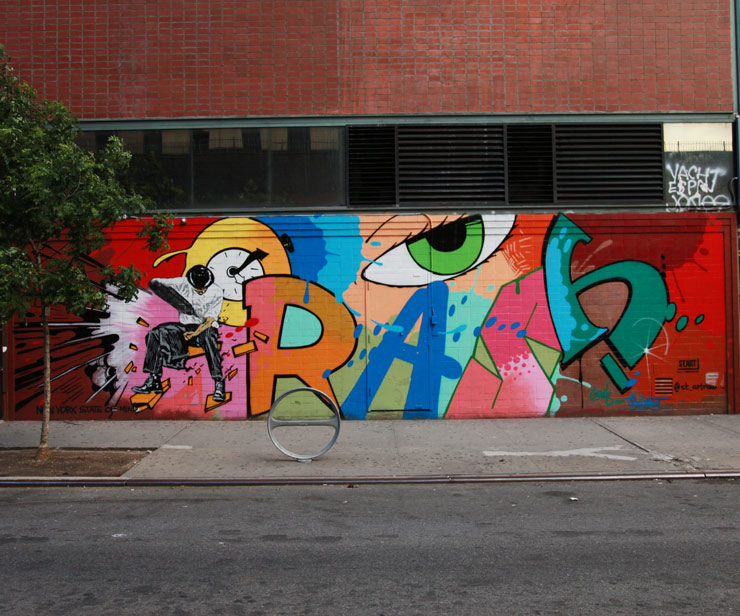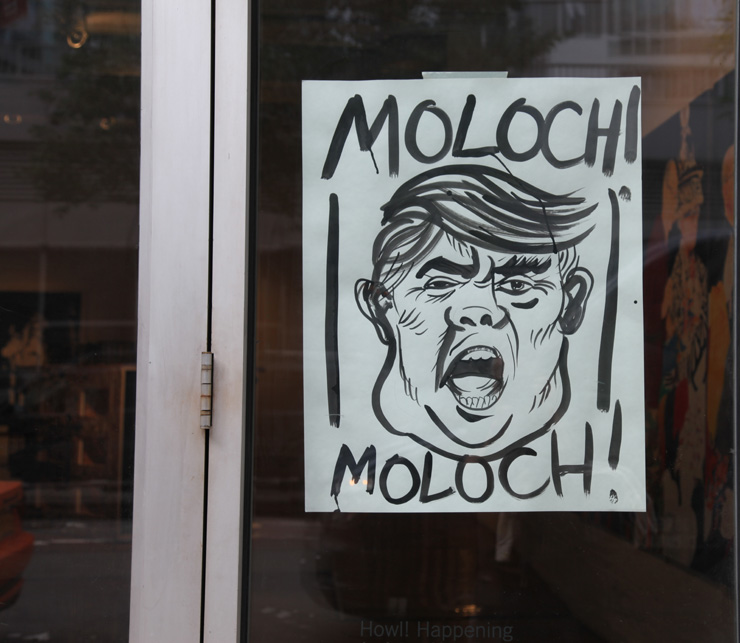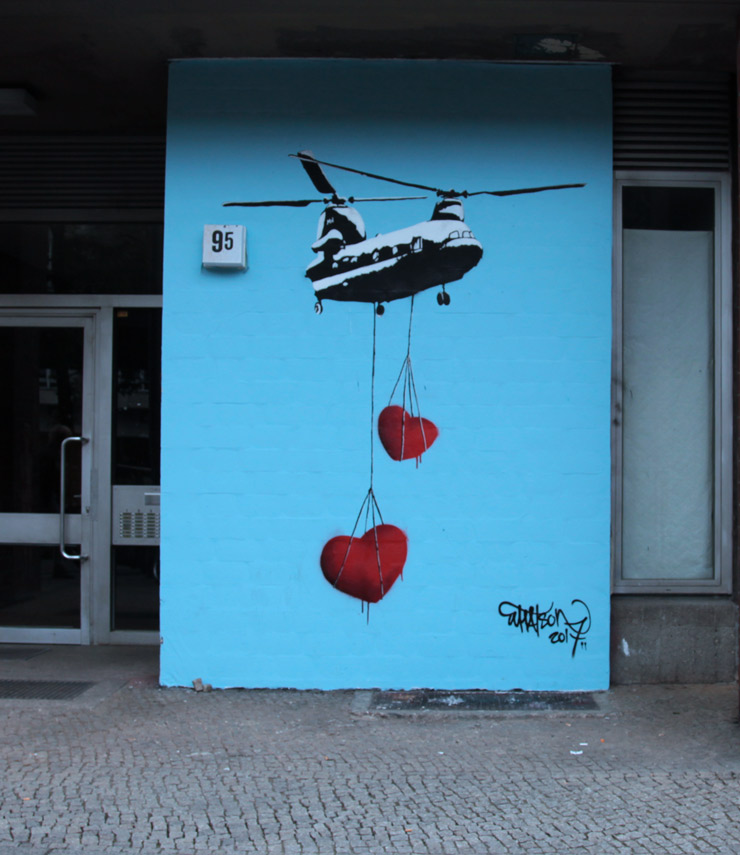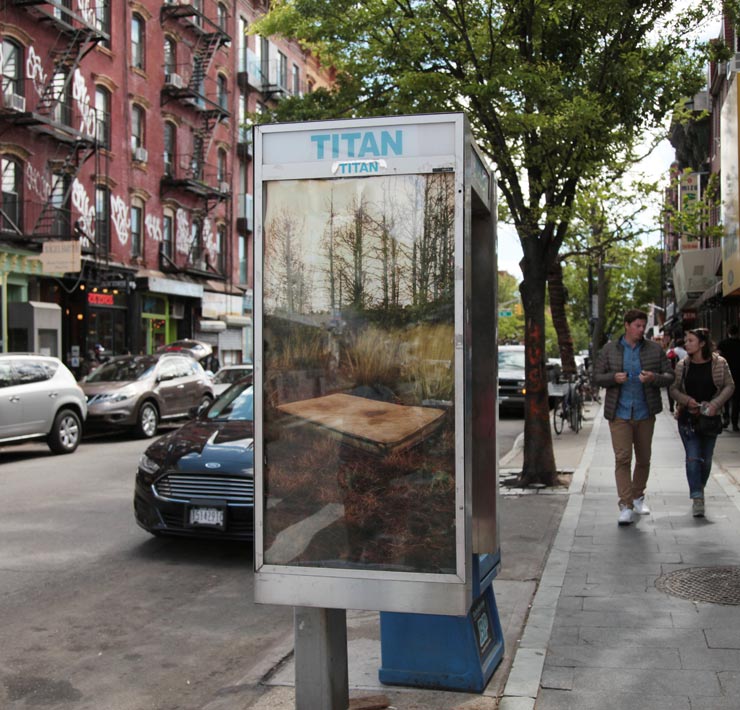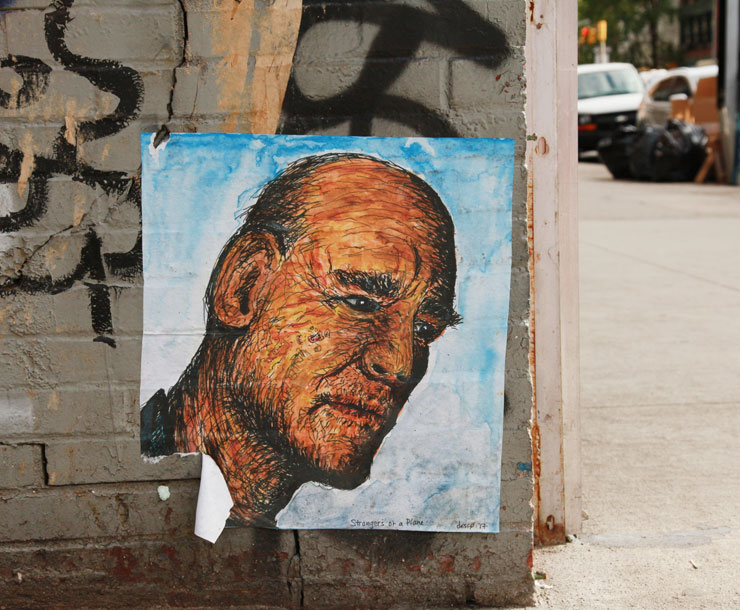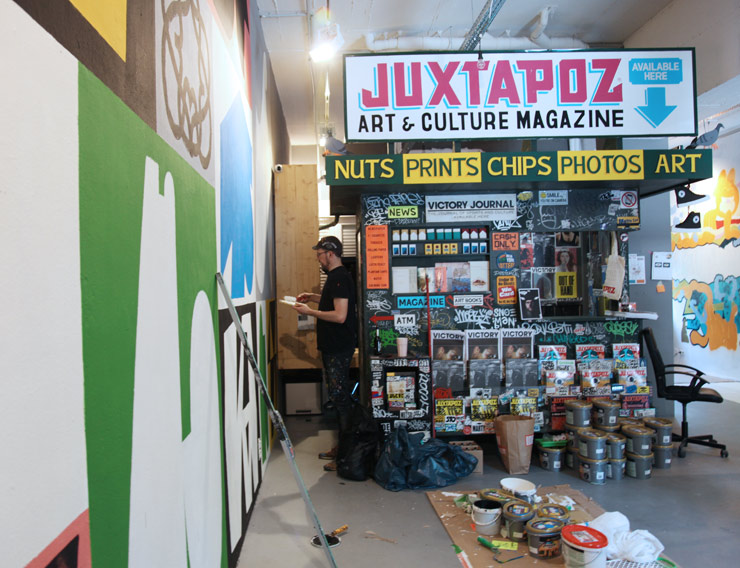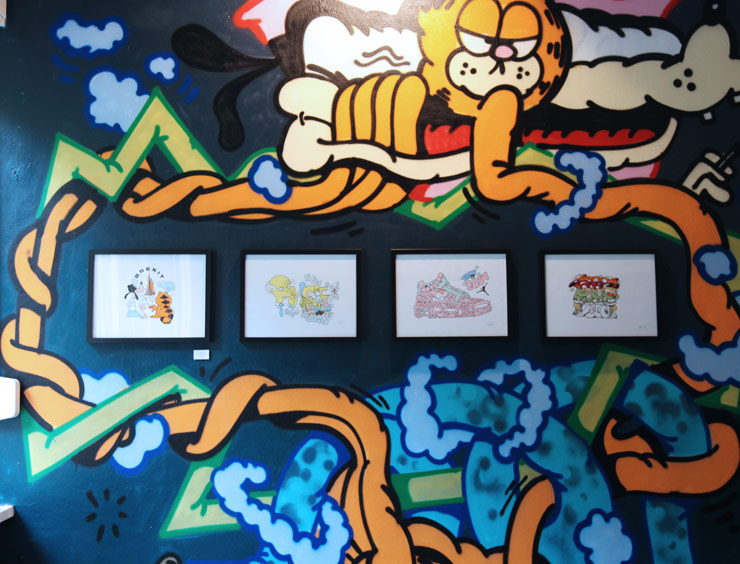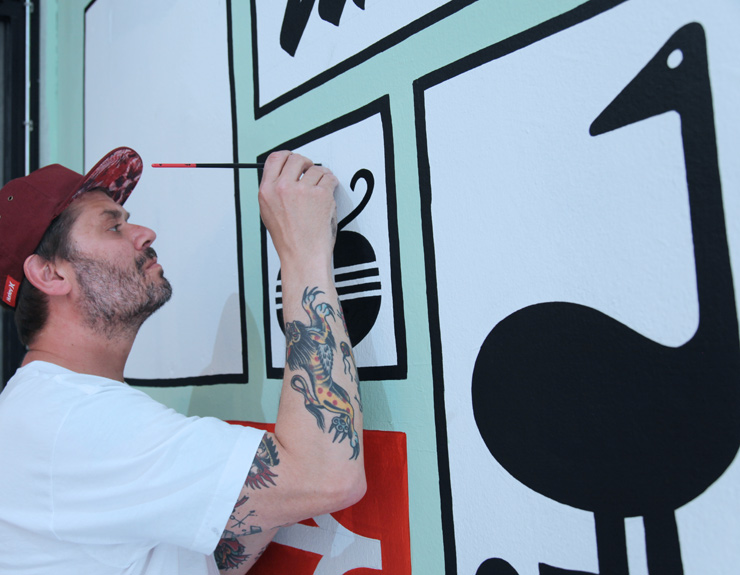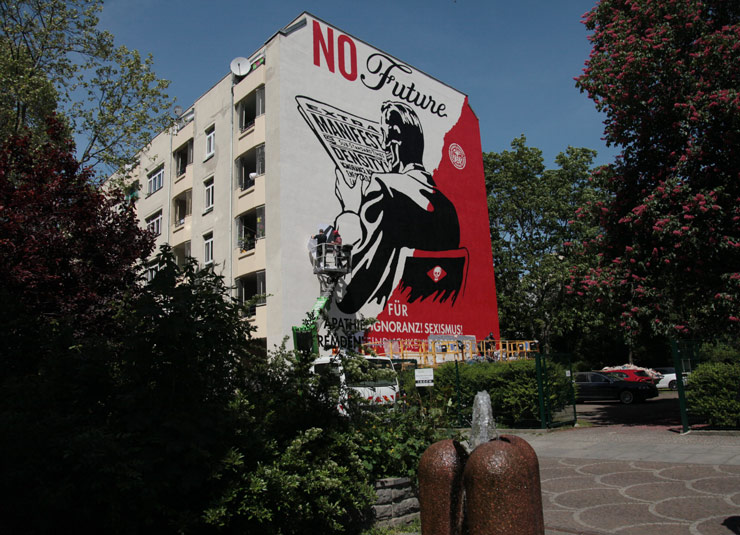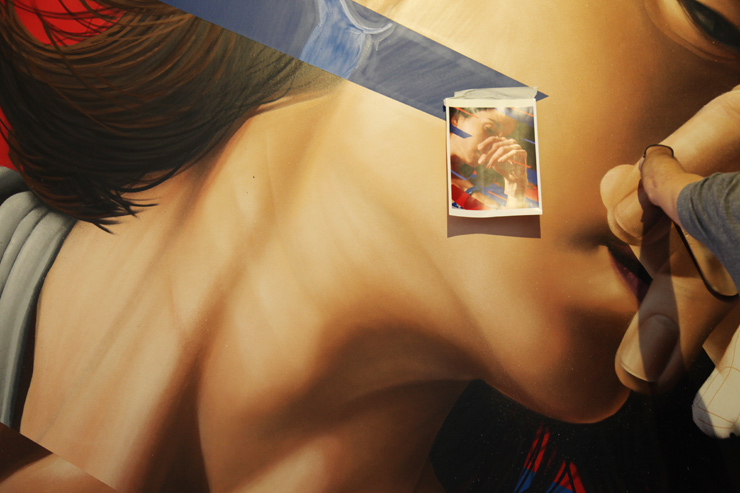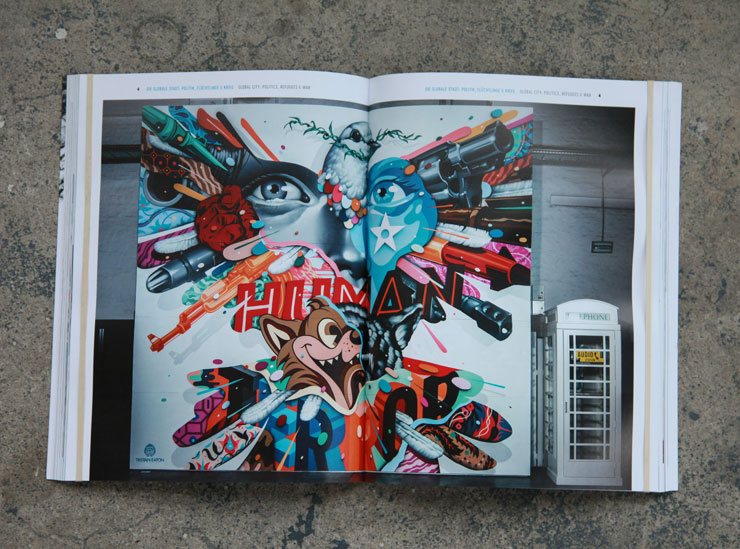Travel blogger and writer Giulia Blocal is sightseeing and living in new places as an independently minded explorer and observer. She has lived in Slovenia, London, Madrid, and Dublin in recent years, discovering their character and cultures and contrasting them with her native city of Rome. Today Giulia shares with BSA readers her late summer trip to Germany for IBUG, a Festival für urbane Kunst (Urban Art Festival) in an abandoned factory.
~ by Giulia Blocal
I’ve just gone through one of the most exciting weeks of the year.

Wartin Paintois. IBUG 2017. Chemnitz, Germany. (photo © Giulia Blocal)
I arrived in Chemnitz, a former industrial town in Saxony (Germany), on the same day of the first group of artists that was invited to paint over an abandoned factory of meat processing machines.
The VEB Spezialmaschinenfabrik shut down in 1992 and when I first entered it, it was just a huge empty building made of red bricks and raw concrete. Windows panes were broken, and here and there some water was dipping from the ceiling.

Wasp Elder. IBUG 2017. Chemnitz, Germany. (photo © Giulia Blocal)
On the first afternoon the artists roamed around the former industrial space to claim their walls – fully in line with the spirit of IBUG, which is an especially grassroots and spontaneous urban art festival where the staff doesn’t assign walls nor require artists to submit sketches.
At IBUG, art grows spontaneously and in an experimental way. As many artists told me, IBUG isn’t meant for you to do something well executed; IBUG is meant to experiment with new things and to encourage you to push yourself out of the comfort zone.

Plus Minus3. IBUG 2017. Chemnitz, Germany. (photo © Giulia Blocal)
Many works were inspired by the location itself, such as Wartin Paintois’ paste-ups depicting the former workers of the factory, all different but all equal to the eyes of the owner who just needed manpower.
Still site-specific, but in a completely different way, is the room painted by PlusMinus3, a Berlin-based group of designers who used the shadow of a former shelving unit as a starting point for their iconic geometrical patterns.

Nespoon. IBUG 2017. Chemnitz, Germany. (photo © Giulia Blocal)
Every time I entered the factory, I could spot something new and yet more artists bustling around – painting, building, welding and experimenting. Although every artist has worked at their corner, they were all working at the same artwork, which turned out to be way more impressive than the sum of its parts.
The courtyard of the former factory got a makeover too. Now, the cooperative mural by the Mexican Eva Bracamontes and the Spanish Koctel dominates the garden. This collaboration -which is a first- arose spontaneously, simply because they both fancied the same wall. This huge wall was in a pretty bad condition (it took them three days just to prepare the wall), so the optimal solution was to join forces and face the big wall together.
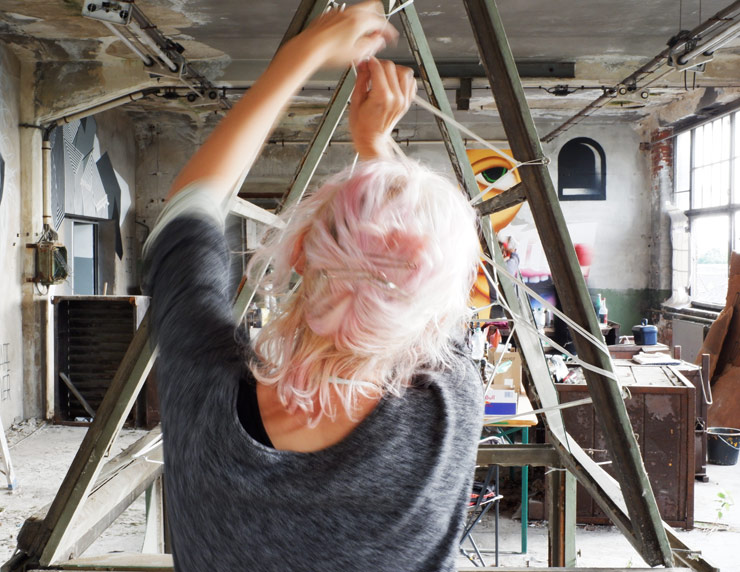
Nespoon. IBUG 2017. Chemnitz, Germany. (photo © Giulia Blocal)
Collaborations aren’t unusual at IBUG. From the ‘Wall of Fame’ at the entrance of the factory, where everybody has drawn something or – at the very least – left their tag, to more thought-out pieces, collaborations arose spontaneously, while checking each other’s sketchbooks over a bottle of beer.
Some collaborations worked out so amazingly that the final piece looks as if painted by just one artist. That’s the case of the IBUG-born duo MAD Gallosch, which painted a bright-colored, comic-like piece.

Nespoon. IBUG 2017. Chemnitz, Germany. (photo © Giulia Blocal)
Artists love this festival because at IBUG there is plenty of space to collaborate and experiment. Once they have done their ‘main piece’, they just roam around to find a second, a third and a fourth wall to paint. When the pressure of the first piece is gone, they feel free to paint whatever and however they want.
An artist who felt especially free to treat the former factory as his own playground is the Italian Mr. Di Maggio. He didn’t even wait to finish his first piece, the one depicting his iconic cyclists at the entrance of the building, before going around the factory armed with spray-cans to scatter his typical faces throughout the whole building, as well as painting a couple of more experimental pieces inside the factory.

IBUG 2017. Chemnitz, Germany. (photo © Giulia Blocal)
The most interesting aspect of his rediscovered freedom is that, after a week of free-style painting, he came back to his initial piece fuelled with new ideas and he made something really special out of it.
This feeling of ‘nothing is done, everything is a work in progress’ is what makes IBUG so special. The Dutch artist Kenneth Letsoin kept painting even after the opening of the festival on a side building that visitors would have not seen – just for art’s sake. I was really impressed by how prolific he is: he simply couldn’t stand a few hours in a row without painting. Actually, his creative vibe was an inspiration for many artists who collaborated with him throughout the week.

Kenneth Letsoin. IBUG 2017. Chemnitz, Germany. (photo © Giulia Blocal)
All this creative energy is so overflowing that it even spilled outside of the factory. The Ukrainian duo made up of Dima Fatum and Maria Uvarova painted a wall on a residential building in downtown Chemnitz.
This piece is majestically executed, with a lot of amazing details. They made it in just two days, as they were eager to come back to the factory to enjoy the IBUG creative vibe.

Dima Fatum mural in the city proper. IBUG 2017. Chemnitz, Germany. (photo © Giulia Blocal)
Eventually, this rusty-and-dusty caterpillar turned into a colorful butterfly.
At the opening weekend thousands of people came to enjoy the artworks and the party in the former VEB Spezialmaschinenfabrik factory.
While the sound system was spreading around its vibes, some artists took the leftover paints to do a bit of healthy bombing on their last night together.

Mr. Di Maggio. IBUG 2017. Chemnitz, Germany. (photo © Giulia Blocal)

Mad Gallosch. IBUG 2017. Chemnitz, Germany. (photo © Giulia Blocal)

Mr. Di Maggio. IBUG 2017. Chemnitz, Germany. (photo © Giulia Blocal)

Koctel. Eva Bracamontes. IBUG 2017. Chemnitz, Germany. (photo © Giulia Blocal)

Dima Fatum. IBUG 2017. Chemnitz, Germany. (photo © Giulia Blocal)

IBUG 2017. Chemnitz, Germany. (photo © Giulia Blocal)
IBUG 2017 participants included:
- Tasso (Meerane)
- Quintessenz (Berlin)
- Kera (Berlin)
- Guido Zimmermann (Frankfurt)
- Zonenkinder (Hamburg)
- Hifi (Dortmund)
- Julia Humpfer (Stuttgart)
- Nespoon (Poland)
- Chromeo (Switzerland)
- Taina (Switzerland)
- Madame Moustache (France)
- BenjAMIN Duquenne (France)
- Sanne Maloe Slecht (Netherlands)
- ZZNNArt (Netherlands)
- Koctel (Spain)
- Necko (Spain)
- Koz Dos (Italy)
- Luca di Maggio (Italy)
- Kid Crayon (Great Britain)
- Wasp Elder (Great Britain)
- Malarko (Great Britain)
- Dima Fatum (Ukraine)
- Maria Uvarova (Ukraine)
- Said Dokins (Mexico)
- Eva Bracamontes (Mexico)
- Stephen Swartz (USA)
- Wartin Pantois (Canada)
- Robolito (Brazil)
 BROOKLYN STREET ART LOVES YOU MORE EVERY DAY
BROOKLYN STREET ART LOVES YOU MORE EVERY DAY








